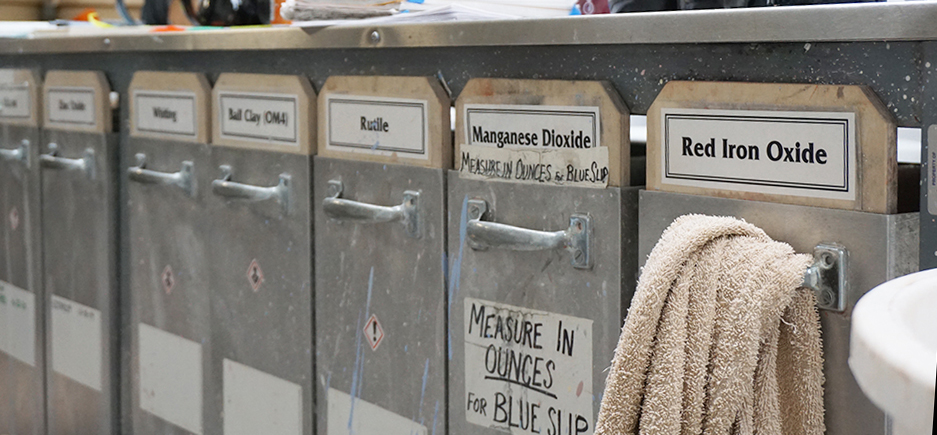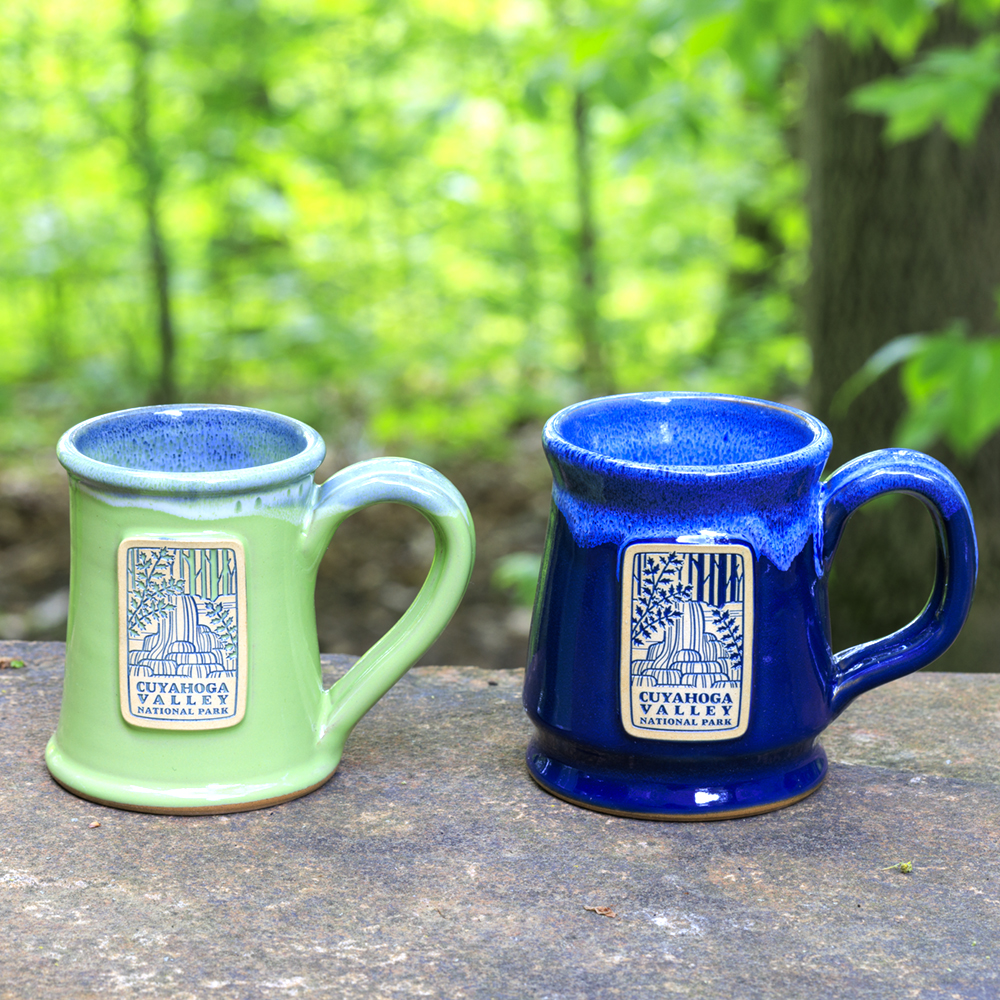
If you haven’t already heard, we here at Deneen Pottery are launching our latest glaze color – Apricot! This glaze had an interesting origin story so it got us thinking that we should share how our glazes are created and what makes glaze mixing especially fascinating. A special thanks goes out to Doug, our trusty glaze technician, for helping explain the wild world of glazes.
“Our newest color, Apricot, came about through a test gone wrong.”

Ceramic glaze is an impervious layer or coating that has been fused to the clay body of the mug through firing. A glaze is made up of three parts. A flux/melter that lowers the melting point, a refractory/stabilizer that bonds the glaze to the clay, and a glass former like silica. This creates the base and then a stain is added to give the glaze its color. It’s a bit like mixing paint and a bit more like a chemistry experiment.
Due to all of the natural elements that go into our glaze, it can be a challenge to create a new glaze, and even to recreate glazes that have long been in working condition. A change in where materials are sourced and mined from, different placements in the kiln while firing, different elements in the clay of the mug, among many other things can cause varying results in glaze colors. It’s a finicky business creating art with ingredients that are dynamic and alive in their own way.

“It takes several months before a new color is approved for mass production.”
“Our newest color, Apricot, came about through a test gone wrong,” says our glaze tech, Doug. He was doing a small test batch for another color and mis-measured the stain amounts, but it ended up coming out looking really beautiful. After that initial test, he then went on to put it through our testing process.
The testing process is quite rigorous as there is a lot to take into consideration when creating a glaze. As Doug said, “To test new colors we start with small batches […] These are fired on test tiles or mugs to check for coverage and color as well as surface melt. If it passes the initial stage we then ramp it up to bigger batches and along the way we test it on our test mugs, then production mugs. We test it as a solid and with marbles. We test how well it looks on the medallions when scrubbed. We check how it will handle touch ups and being re-fired.” With all that, from start to finish, it takes several months before a new color is approved for mass production.

So as you can see, the glaze making process can be a long and unpredictable journey. The glazes and the materials that create them are ever changing. “Working with natural materials, you can never be quite sure what will happen next,” Doug stated as one of his favorite parts about doing what he does. And that goes to the core of what makes Deneen Pottery mugs so special. Creating mugs with our hands from natural materials makes each mug unique, a perfect way to make an individual and lasting impression in the place that matters most – the heart of the home.







